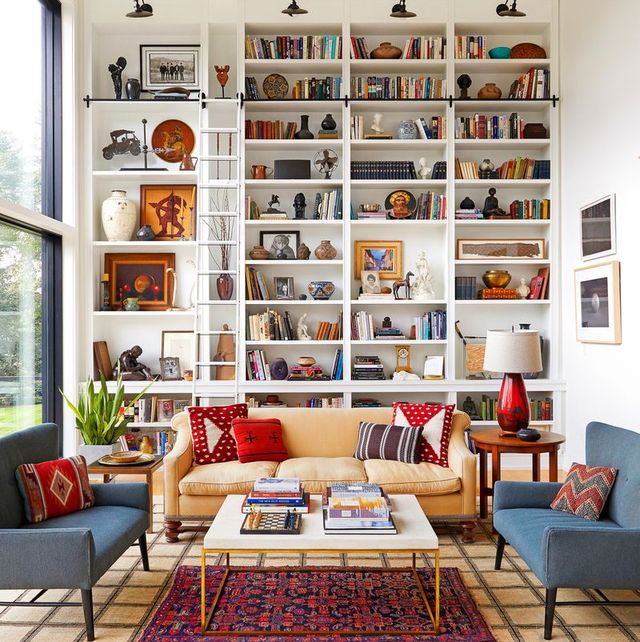Master the Art of Layering Textures in Home Design for a Cozy Environment
The capability to successfully layer structures within home decor is a nuanced ability that dramatically adds to a warm and inviting ambience. By comprehending the interplay in between various materials and their responsive qualities, one can create a room that not only looks visually pleasing but additionally feels welcoming. The selection of complementary structures, from soft materials to all-natural aspects, is critical in achieving this balance - Home decor. Nevertheless, the obstacle depends on grasping the techniques that boost a space from just useful to exceptionally relaxing. Discovering these methods discloses exactly how thoughtful layering can change your living environment into a true refuge.

Understanding Appearance Essentials
When it involves home decor, understanding the principles of texture is vital for creating an unified and inviting area. Appearance describes the responsive high quality of surfaces and can dramatically influence the general aesthetic and feeling of an area. It encompasses a selection of elements, consisting of surfaces, materials, and patterns. By attentively layering structures, you can add deepness and rate of interest, successfully changing a level and uninspiring atmosphere into one that is visually interesting and comfy.

Picking the Right Materials
Choosing the appropriate materials is crucial in attaining a well-layered texture in home design. The choice of materials not just affects the general visual but also affects the convenience and functionality of the space. When thinking about appearances, prioritize natural fibers such as cotton, silk, woollen, and bed linen, which use heat and a tactile high quality that artificial products often lack.
For upholstery, choose for sturdy textiles that can withstand wear while keeping their structure. Velour and chenille can add lavish deepness, while canvas and denim lend an even more laid-back feel. Incorporating timber, rock, or metal can improve the responsive comparison, giving a based, natural aspect to your decoration.
Devices like cushions and carpets can introduce diverse textures and patterns, enriching the general split effect. Eventually, the best product choices will certainly balance with your design vision, producing a room that feels inviting and natural.
Layering Techniques for Deepness
Efficient layering strategies are important for producing deepness in home style, changing a level space into one that feels rich and inviting. To accomplish this, start by including numerous appearances that contrast yet complement each other.
Layering rugs can efficiently define locations within a room, including warmth and measurement. Purposefully placing throw cushions with differing textures and sizes on sofas or beds can improve depth and comfort.
On top of that, include building aspects such as racks or framed art work to create vertical layers. This not only draws the eye up but likewise supplies chances to present added appearances via attractive items displayed on the shelves.
Color Coordination and Structure
In the realm of home style, attaining consistency between color and appearance is important for establishing a natural and welcoming atmosphere. When thoughtfully collaborated, color and structure can boost the aesthetic appeal of a room, producing depth and rate of interest.

Next, concentrate on texture. Soft textiles like velvet or bed linen juxtaposed with difficult materials such as wood or steel produce a vibrant interplay. As an example, a deluxe velvet couch coupled with a sleek, metallic coffee table presents a responsive contrast that invites touch and expedition.
In addition, layering different textures-- like a woven carpet under a smooth table-- can better enrich the area. Bear in mind to maintain a cohesive appearance by restricting the variety of colors and structures, which aids prevent visual turmoil. By understanding the art of shade coordination and structure, you can create an atmosphere that really feels both harmonious and inviting.
Seasonal Structure Transitions
As the seasons change, so also need to the textures within your home to mirror the developing environment and state of mind. Transitioning your decor from one period to another can develop a feeling of freshness and comfort, improving your space's overall allure.
In spring and summer, embrace lighter fabrics such as linen and cotton. These products advertise a breezy feel and can be enhanced with dynamic patterns or refined appearances like stitched information. Integrate airy toss cushions and light-weight blankets to keep a sense of leisure.
As fall approaches, take into consideration introducing warmth with richer structures. Woollen, velvet, and much heavier knits can offer comfort and comfort. Go with earthy tones and layered textiles like beefy knit throws or sumptuous velvets to produce a welcoming setting.
Winter months requires a a lot more indulgent technique. Integrate layered textures with synthetic hair, thick woollen, and luxurious materials - Home decor. These components not only add deepness to your style yet likewise invite heat additional info during colder months
Final Thought
In conclusion, grasping the art of layering structures in home design considerably adds to creating a cozy ambience. Additionally, adapting appearances seasonally boosts the overall aesthetic and convenience of the home.
The capacity to successfully layer appearances within home decor is a nuanced ability that substantially contributes to a warm and welcoming environment.When it comes to home style, comprehending the principles of appearance is vital for developing an unified and welcoming room. By grasping the fundamentals of appearance, you This Site lay the groundwork for even more innovative layering techniques, leading to a well-curated and welcoming home design scheme.
Picking the best products is crucial in attaining a well-layered texture in home decoration.In conclusion, grasping the art of layering structures in home style significantly contributes to producing a relaxing environment.